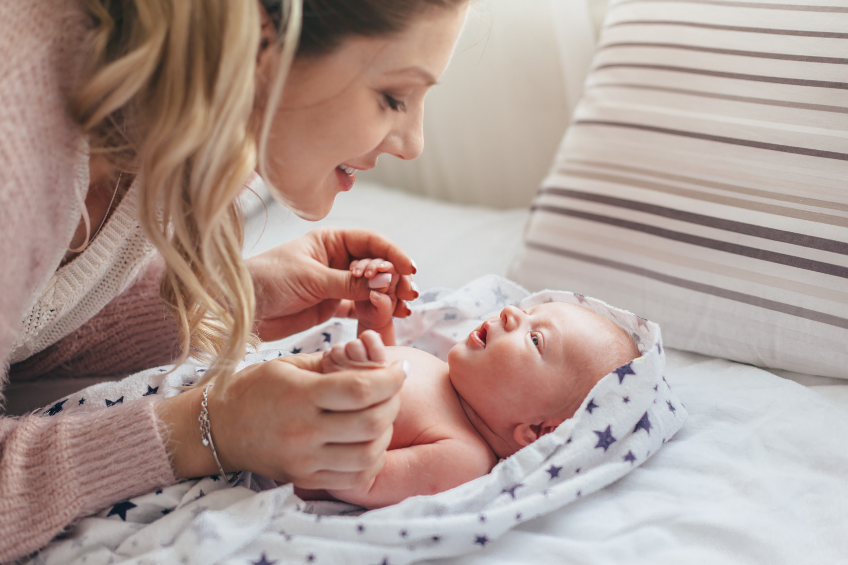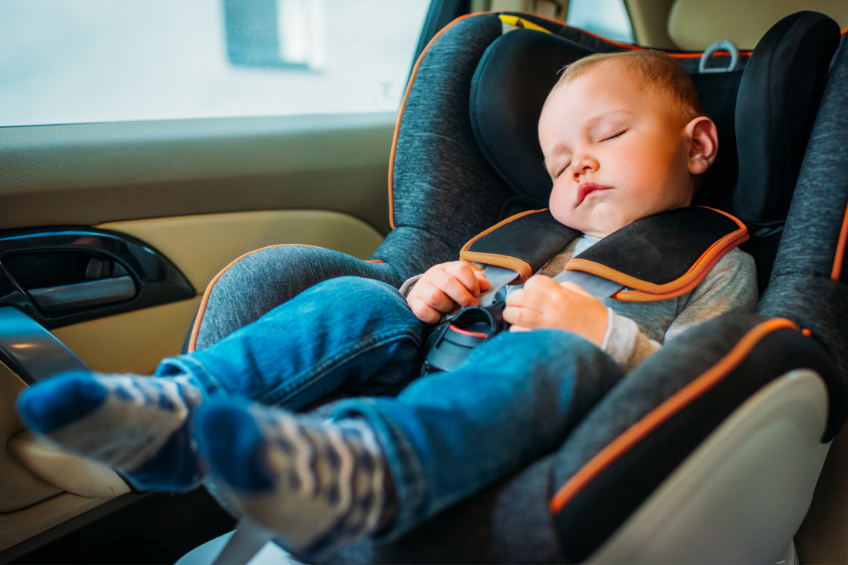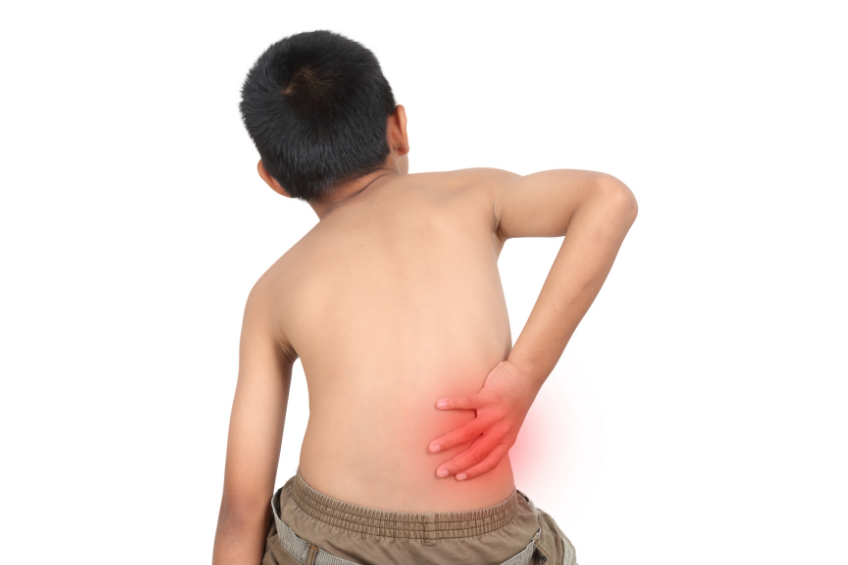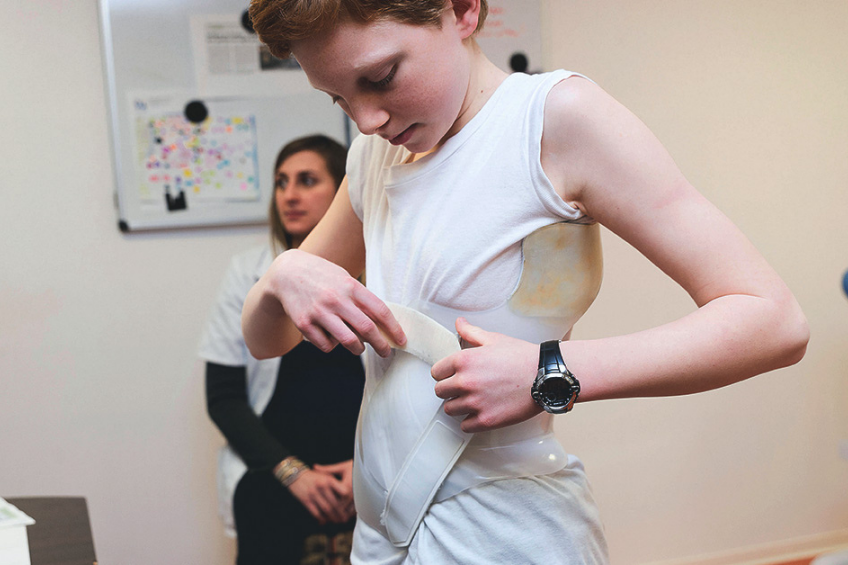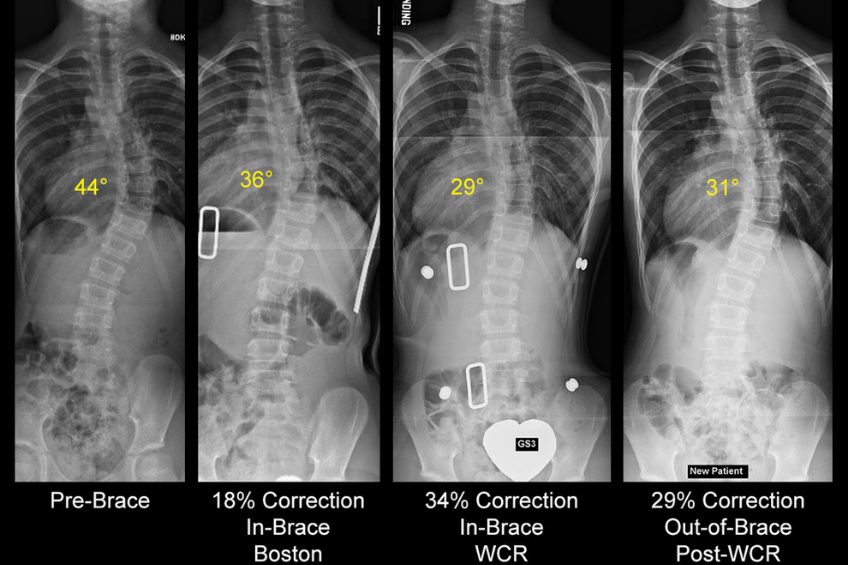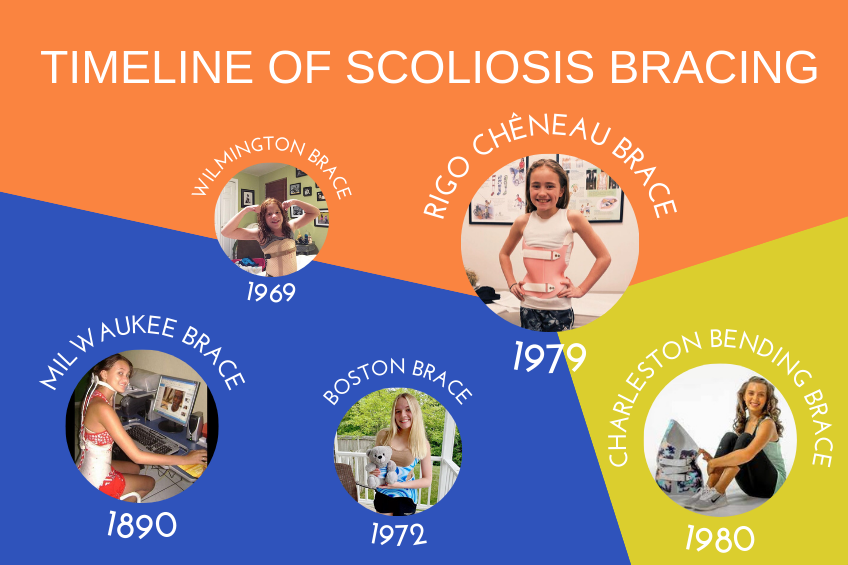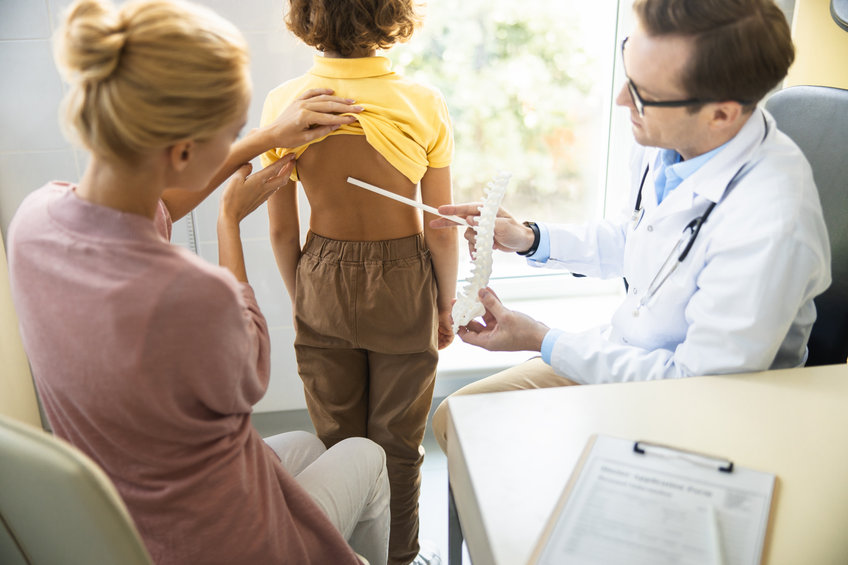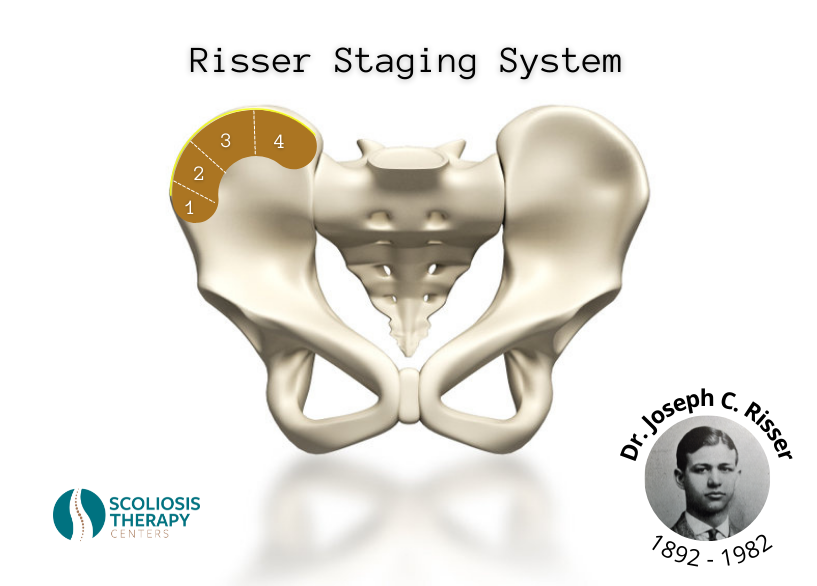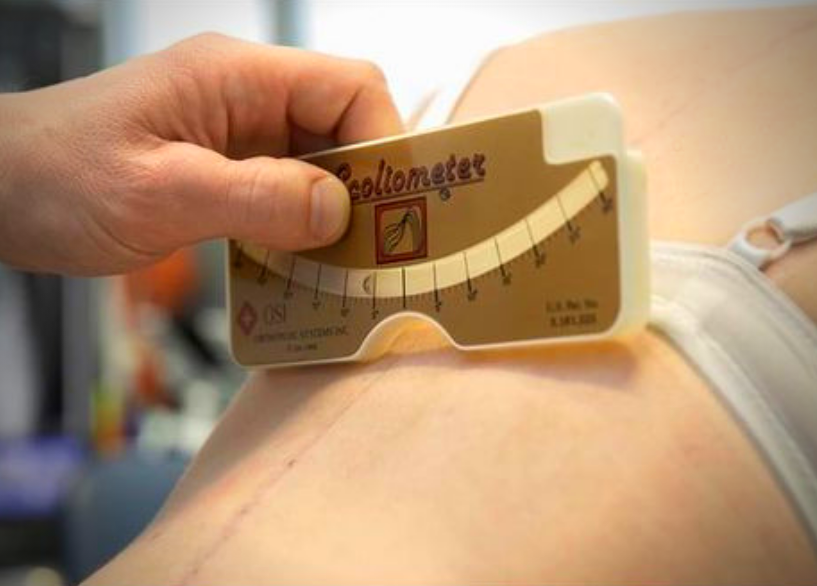Congratulations, it’s a girl! Congratulations, it’s a boy. Whichever sex your baby is, one thing you will notice is that it’s back is straight. Babies are born with flexible bones and we as parents should do all we can to keep their backs upright. Sleeping on a firm mattress only, without a pillow keeps the baby’s back in harmony with the rest of its body. As children grow into preteens some of them become more sloping in the shoulders. (This tends to happen more to girls than to boys.) Some of these children will develop a condition called scoliosis. Depending on the degree measurements, such a child may need to be fitted with a custom-made scoliosis brace to be worn for specific amounts of time.
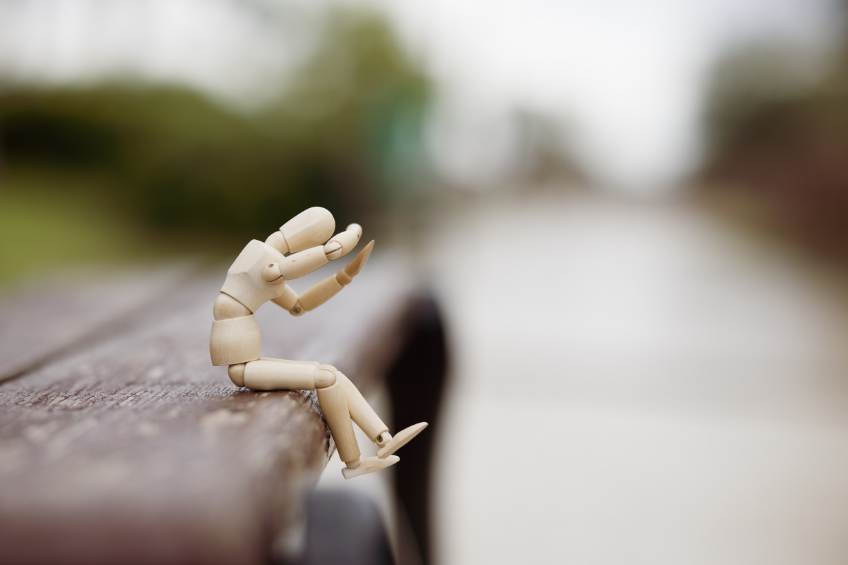
Pediatric and adolescent scoliosis occurs when a child’s spine abnormally curves sideways or turns. Scoliosis can range from mild to severe. People with mild scoliosis may only need to be seen by their doctor on a regular basis to check on its progress and be instructed with home physical therapy. Some may have to go out to a physical therapy center. This is because a physical therapy facility will have many machines to take advantage of in addition to the attention of a physical therapist who deals with childhood scoliosis. Those with more severe cases of scoliosis may need bracing and today’s braces have become more comfortable to wear and are not a stigma as in the past. Today’s braces are decorated according to the child and adolescent’s age and liking.
Is There a Way to Maintain Good Posture as Our Children Mature and Can We Prevent Them From Becoming Slouching Adults?
It is so satisfying to watch a person walking straight with good posture. Guys who have spent time in the army and girls who are dancers are a pleasure to watch. But what about those kids who do not have good posture, are there preventive or therapeutic measures that can be implemented in such cases?
Well known mattress companies such as Posturepedic and others claim that their mattresses are good for your posture. Is this true? Can a mattress affect the straightness of your spine? When the mattress is too firm, it will pressure your spine and cause misalignment. If the bed is too soft, your body will be able to sink into the bed, causing bad posture while you sleep, which can cause of a deterioration of good posture.
Was Scoliosis Prevalent in Past Generations?
Fifty years ago, kids played much more physical games and activities than they do today. True, that in current times, there are plenty of opportunities for students both in and out of school to excel in some type of sport. However, this is a formal way of displaying their talents and desires to compete in different types of athletics and recreational exercises. Fifty years ago, kids organized their own outdoor games and events. Such activities did not involve expensive gear and equipment, that was left to the pros. Games such as stoop ball, only needed a stoop and a ball. All a game of punch ball needed some local space such as the street in front of the house and a ball. Marbles was another fun street activity for the younger set and was taken very seriously.
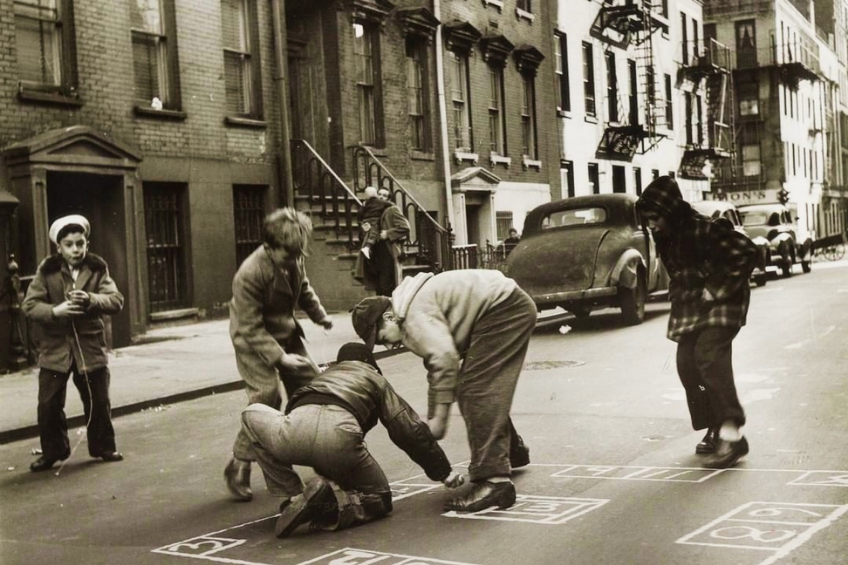
All these actions helped keep the kids in shape physically. Walking was a practical way to get around as not all families had cars and often parents did not even know where their child was headed. Those days are not coming back so parents must be diligent in making sure that their children’s posture remains straight. Scoliosis therapy has been around for generations. In the past surgery was prescribed for cases that today can be satisfactorily managed through bracing and physical therapy.
What Are the Ways to Prevent Bad Posture and Scoliosis?
This depends on the cause of the bad posture. Bad posture can be genetic and run-in families or there could be a misalignment of the spine that presents itself in early childhood before the child can develop bad posture habits. In such cases it is not preventable, but it is treatable. Other cases of bad posture can appear for reasons such as low self-esteem, shyness, uncomfortable feelings about body structure. Girls who develop early can actually feel weighed down and the bad posture is actually physically motivated.
What is posture?
Posture refers to two different ideas. The first one is called dynamic posture which refers to how a person holds his or herself while in motion. Examples of dynamic posture are bending over, running and walking. The second kind of posture is static posture referring to a person’s stance when he or she sits, stands, and sleeps. There are three natural curves to the spine, at the neck, mid back, and lower back.
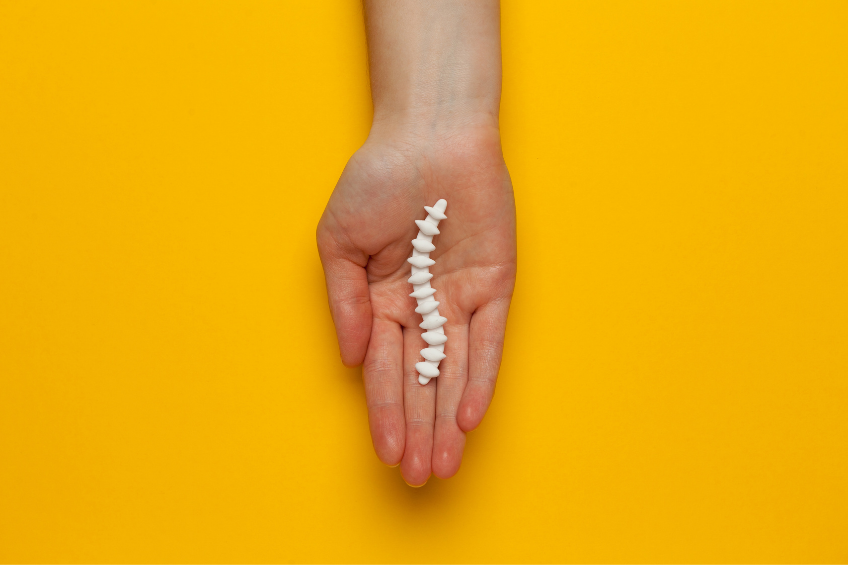
Guidelines for Improving Posture
1) Try to always be aware of your posture. It could be while doing physical activities such as walking and running or stationary activities such as using the computer and washing dishes. This is especially true when sitting at our post COVID-19 work at-home workstations. Some have developed a posture condition called vulture neck which comes from sitting at a computer all day. Take breaks and try to get a chair that forces you into a good posture.
2) Watch your weight. When someone is overweight the stomach muscles weaken which affects the spine and causes pain in the lower back. Folks end up having back surgery unnecessarily when they could have lost weight instead.
3) Workout regularly. Exercises such as yoga which have slow movements keep a person focused on their body’s movements. Core muscles such as the back, pelvis and stomach get strengthened by exercising.
4) Folks, especially women, must wear comfortable shoes. Sport shoe companies such Sketchers and New Balance have models that resemble shoes that can be worn to work for men. Women should stick to low-heeled shoes and stay away from the high ones. Any woman will tell you what happens when she wears high heels. The back falls forward and causes hunched posture. The heeled shoes slip off and the woman must use her foot muscles to hold on to the shoes for dear life putting all concentration on keeping on the shoes and none of the concentration on being mindful of her posture and how the spine is aligned.
5) Wherever you are, in the office, kitchen or laundry room, it is imperative to have posture protectors. Some of these are rubber foam area rugs near the sink in the kitchen and office chair floor protectors to make sure that the chair stays firmly in one spot. Otherwise, you will end up moving backwards and hunching over to get to the computer. The kind of office chair you purchase makes a huge difference in your posture sagging or aligning straight.
What About Scoliosis in Children?
Idiopathic scoliosis is the common form of this condition in children and teens. Taking the lead as parents by practicing good posture is an effective way to show our children how to stand and walk correctly. Criticizing your child’s posture will do little to improve it and will cause resentment. There is a valid reason why your child’s posture is not optimal, and it would be prudent to make an appointment with a respected scoliosis specialist to solve this mystery. A professional who makes the diagnosis will be respected by your child and he or she will not take it as personal criticism.
Final Words
Perfect posture is something we should all strive for. It takes both mental exercise and physical exercise to achieve this goal. When walking, it is important to swing your hands at your sides while holding your tummy in. Those old-fashioned exercises of walking with a book on your head are right in theory. But no one walks with a book on their head daily. In fact, this type of “protective style of movement can cause back pain to intensify. Instead, by walking in a more relaxed way, back pain can subside. One should never forcefully keep their back straight at work while sitting since this is akin to fist clenching. Fist clenching for eight hours a day will cause a sore wrist. The same with the back. You might be striving for perfect posture, but it will be accompanied by back pain.
Each of us can find our own daily regimen of keeping our posture in order. It does not have to be an expensive gym membership but simpler home and office exercises. Talking time off at your desk to sit up straight and push your arms and shoulders back holding for five to ten seconds as many times as possible is one exercise that can be done often without even leaving the chair. Instead of bending to reach for something deep in the kitchen cabinet, crouch instead and keep your back straight. Continuous slouching can be bad for your health since it can be harder to breathe and digest food. Perfect posture means different things to different people, and no one knows for sure if anyone has attained that objective, but even getting close is a great achievement.


